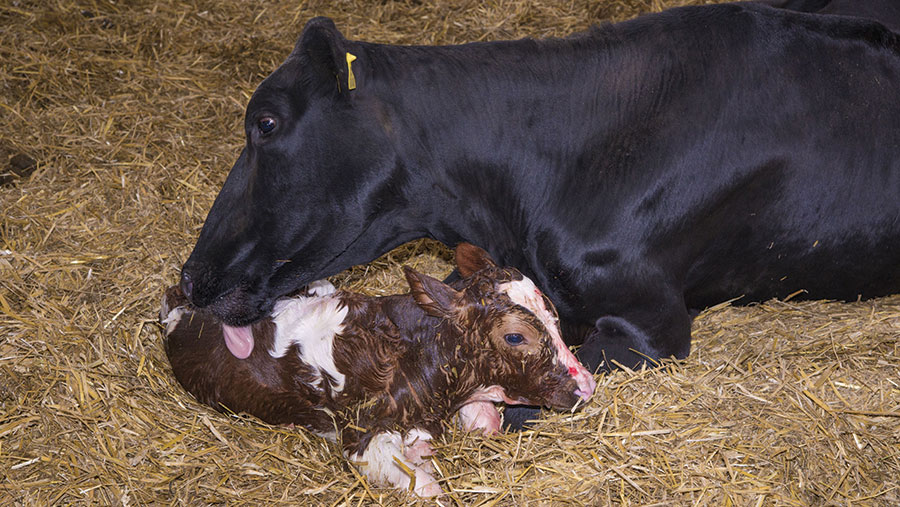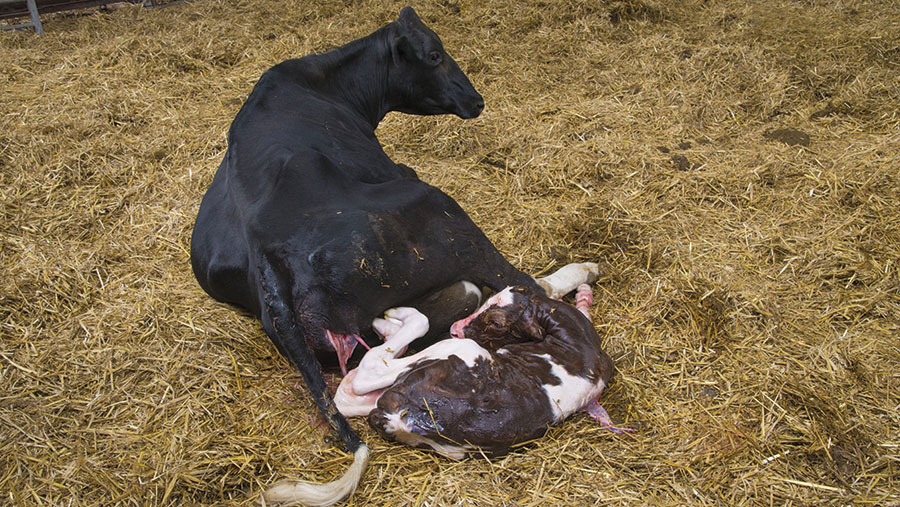Advice on close-up pen timings for dry cows before calving
 © FLPA/John Eveson/Shutterstock
© FLPA/John Eveson/Shutterstock The number of days a cow spends in the close-up pen will have a direct effect on fertility and milk yield, making it a vital parameter that all farmers should be tracking.
Independent research carried out by vet John Cook found cows that spent more than 14 days in the close-up pen just before calving produced 5kg/day more milk by the fourth week of lactation versus cows that stayed there less than 14 days.
They also got pregnant quicker and were less likely to be culled.
The research was carried out on 6,500 cows in the UK. Most of the herds were recording through DairyComp.
See also: Guide to getting your dairy transition housing right
Dr Cook, who is now global technical consultant for World Wide Sires, says it ultimately comes down to dry matter intake (DMI).
Dry matter intake
Every time a cow is moved, her intake and rumination rate will drop for 48 hours.
If she’s moved less than 14 days before she calves, she’s trying to recover rumination rates at a time when feeding and rumination are naturally dropping in the run-up to calving. This means she doesn’t have time to recover.
Dr Cook explains: “If we move her at an inappropriate time, her feeding habits change, her rumination changes and her ability to increase dry matter intake after calving is compromised.”
As DMI is essential to avoid post-calving disease problems and maximise yields, the cow starts lactation on the back foot.
There is the potential to “rescue” some of these cows if fresh cow management is excellent, but the aim should be to prevent issues in the first place.
Dr Cook suggests thinking about the following five areas:
1. Have cows in the close-up pen for 21 days
There will always be a natural variation in pregnancy length of about seven days, so that needs to be factored in. That is why 21 days is better than 14 days.
2. Measure how many days cows are in the close-up pen
How many days are each cow spending in the close-up pen? Don’t work on averages, as these are misleading.
If your average is 14 days, that means 50% of cows are in there for less than 14 days.
Work it out on your computer management software or use a pen and paper to write down when a cow gets moved into the close-up pen and when she calves.

© FLPA/John Eveson/Shutterstock
3. Think about when and how you move cows
Ideally, a cow should be dried off into a pen and then remain in that stable group until calving, or move into an empty, close-up pen.
However, if that’s not practical, ensure cows are only moved into the close-up pen one day a week to avoid disruption.
If you know a cow is going to be moved to the close-up pen and won’t have at least 14 days there, leave her where she is. This will ensure her intakes aren’t compromised.
4. Locate the close-up pen away from activity
Any distraction will negatively affect feed intakes, so it’s worth locating close-up cows away from any activity (such as around the parlour).
Consider putting a curtain up to block off distractions or locating the group in a separate building. Ensure there is plenty of trough and water space and both are available 24/7.
See the AHDB feeding space and drinking water availability allowances guide for more information.
5. Ensure fresh cow management is top-notch
A fresh cow group is ideal, but if that’s not possible, ensure fresh cows are looked at every day.
Painting their calving date on their rear is a good way to identify them quickly in the herd.
Check that she is ruminating, as this is an indication she has eaten. If she is not ruminating, take her to the feed fence.
Rumination monitors can also be useful in tracking feed intakes.
